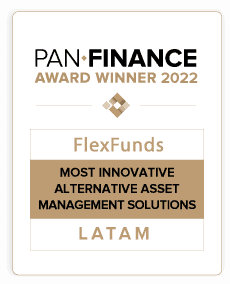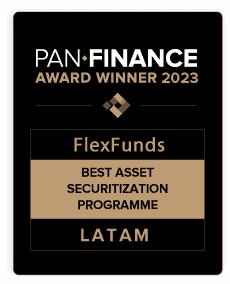- This article provides an analysis of the ongoing debate between passively and actively managed investment funds to help understand their key characteristics and differences.
- The information below is valuable for portfolio managers and investment advisors seeking a financial instrument to optimize their objectives in the complex landscape of the markets.
- FlexFunds, a company specializing in the design and issuance of investment vehicles, offers tailor-made solutions that can enhance the distribution of your strategies cost-efficiently. If you want to delve into the products and find the solution that best suits your needs, feel free to contact our team of specialists.
In recent decades, investment funds have gained popularity as financial instruments. They facilitate investment in diversified portfolios of assets, offering the flexibility to choose between two general strategies: passive management and active management. Both involve convergent approaches and methodologies, each with a set of advantages and disadvantages.
Passive Investment Funds
Passive investment strategies involve designing a portfolio that replicates the performance of a specific stock or fixed-income index. Therefore, the primary goal of passive investment is to achieve returns in line with the chosen index without aiming to outperform it. This approach is commonly associated with financial vehicles such as ETFs and mutual funds.
Some of the main advantages of these investment funds include:
1. Low Costs
This instrument is characterized by low fees and cost efficiency since, by replicating an existing index, its management requires minimal resources and time for extensive research, analysis, and operations. In this sense, these funds are a very attractive alternative for portfolio managers whose clients are concerned about costs.
2. Broad Diversification
Opting for this instrument maintains exposure to a wide range of securities within a specific market segment or industry. For example, a fund that replicates the behavior of the S&P 500 index will invest in shares of all companies listed in that market, allowing for automatic diversification and reducing the risk of selecting different assets.
3. Transparency
This is one of the main characteristics of this type of fund since, by replicating a specific index, investors can easily know where their money is invested. Similarly, transparency builds trust among the portfolio manager’s clients, who can assess the fund’s performance and compare it with their goals or other alternatives.
4. Consistency and Stability
Passive investment funds typically offer returns that approximate those of the underlying index, excluding expenses and fees. By not actively seeking to outperform the market, they tend to deliver more predictable and stable returns over the long term.
5. Liquidity
Likewise, these instruments are usually more liquid than actively managed ones since they are referenced to indices traded in the stock markets.
Active Investment Funds
The main goal of portfolio managers and analysts in active investment strategies is to outperform the market or a specific benchmark. Active and professional management allows the portfolio manager to design various strategies for selecting assets to invest in, often resulting in higher fees than passive management. This type of strategy is commonly associated with actively managed mutual funds and hedge funds, among others.
Some of the main advantages of this type of instrument include:
1. Higher Potential Returns
The main appeal of investing in these financial products is the potential to outperform the market. In this regard, professional managers and analysis teams focus on identifying undervalued and/or overvalued assets or securities and analyzing market trends to make strategic decisions that allow for higher returns than those provided by passive management.
2. Flexibility
Active management experts have the ability to adjust their investment portfolios by modifying the assets they invest in as a response to possible changes in market conditions. Portfolio managers can allocate capital to specific sectors or assets they believe will perform well or reduce exposure to certain assets with a probability of low returns. This adaptability allows investment in these funds to be most suitable during cyclical changes or periods of volatility.
3. Active Risk Management and Diversification
Thanks to active investment funds, portfolio managers can use various risk management strategies to protect themselves from market trend changes. Some of these strategies may include the use of hedging instruments such as derivatives, as well as changes in the sector or investment in safe-haven assets to limit losses during market downturns. Depending on the portfolio manager’s strategy and the investor’s profile, the level of diversification may be reduced to concentrate positions in certain types of assets.
4. Access to Valuable Information
Managers of these types of funds base their decisions on relevant information obtained from various experts specializing in various industries and types of assets. This allows the portfolio manager to access more in-depth and specific information that is not available to other investors, helping to identify attractive investment opportunities. In this regard, transparency is usually limited as the assets in which the fund invests are not always made public.
Which Type of Fund Offers Greater Returns?
In the case of passive investment, as there is no active management of positions, returns are based on the price changes of individual financial assets that make up the replicated index.
However, the return of an active investment fund can vary greatly from year to year, depending on what is happening in the markets. Therefore, drawing adequate conclusions when comparing returns against passive management is difficult, and long-term analyses provide more suitable information.
In general, active investment funds tend to fail or have worse returns than passive ones when analyzing their long-term performance. In this regard, according to MorningStar, with data from June 2023, only one in four achieved the average return of their passive investment rivals over the last ten years.
In any case, history has shown that it is extremely difficult to outperform passive management returns, especially in the long term. If we look at the SPIVA Scorecard data for active fund management versus S&P Dow Jones indices for passive management, it can be determined that, in the case of the U.S., for a one-year period in investments in large-cap funds, 60.90% of actively managed ones obtained lower returns than the S&P 500, a value that increases with the analysis period. In the case of 15-year periods, the figure rises to 92.19%, with only 7.81% outperforming the index.
Thus, in operations over shorter time frames, active investment funds have a higher probability of generating returns higher than the market, although they may suffer significant losses.
In conclusion, the choice between one type or another will ultimately depend on financial goals, risk tolerance, and time horizon, as both types have advantages and disadvantages.
Passive strategies are ideal for those seeking lower costs, broad diversification, and a hands-off investment approach. Active strategies may be suitable for those who believe in the potential for superior returns, value the specialized experience of the manager, and are not concerned about higher fees. They are typically used to achieve high short-term returns.
Ultimately, a well-diversified portfolio should include elements of both passive and active investment to leverage the benefits and possible strategies of each option. Regardless of the approach selected by the portfolio manager, thorough research and understanding of their clients’ goals and risk tolerance are crucial before making investment recommendations in today’s dynamic markets.
FlexFunds partners with asset managers worldwide to offer design and launch of investment vehicles and corporate administration services. If you have any questions or would like to delve further into this topic, you can contact one of our financial experts to submit your inquiry.
Sources:
- https://www.morningstar.com/etfs/actively-managed-funds-measured-up-well-market-rebound
- https://www.spglobal.com/spdji/en/research-insights/spiva/#us







